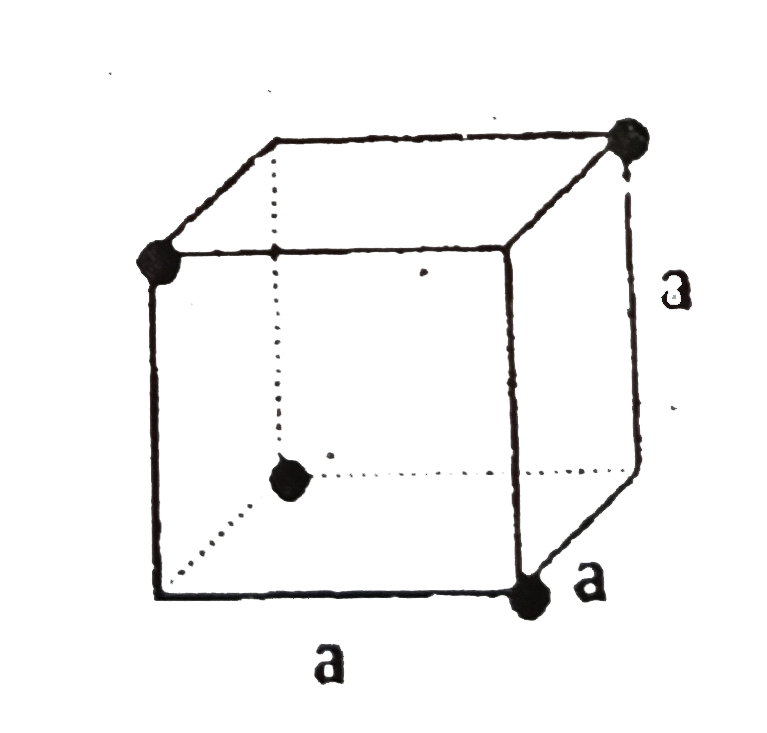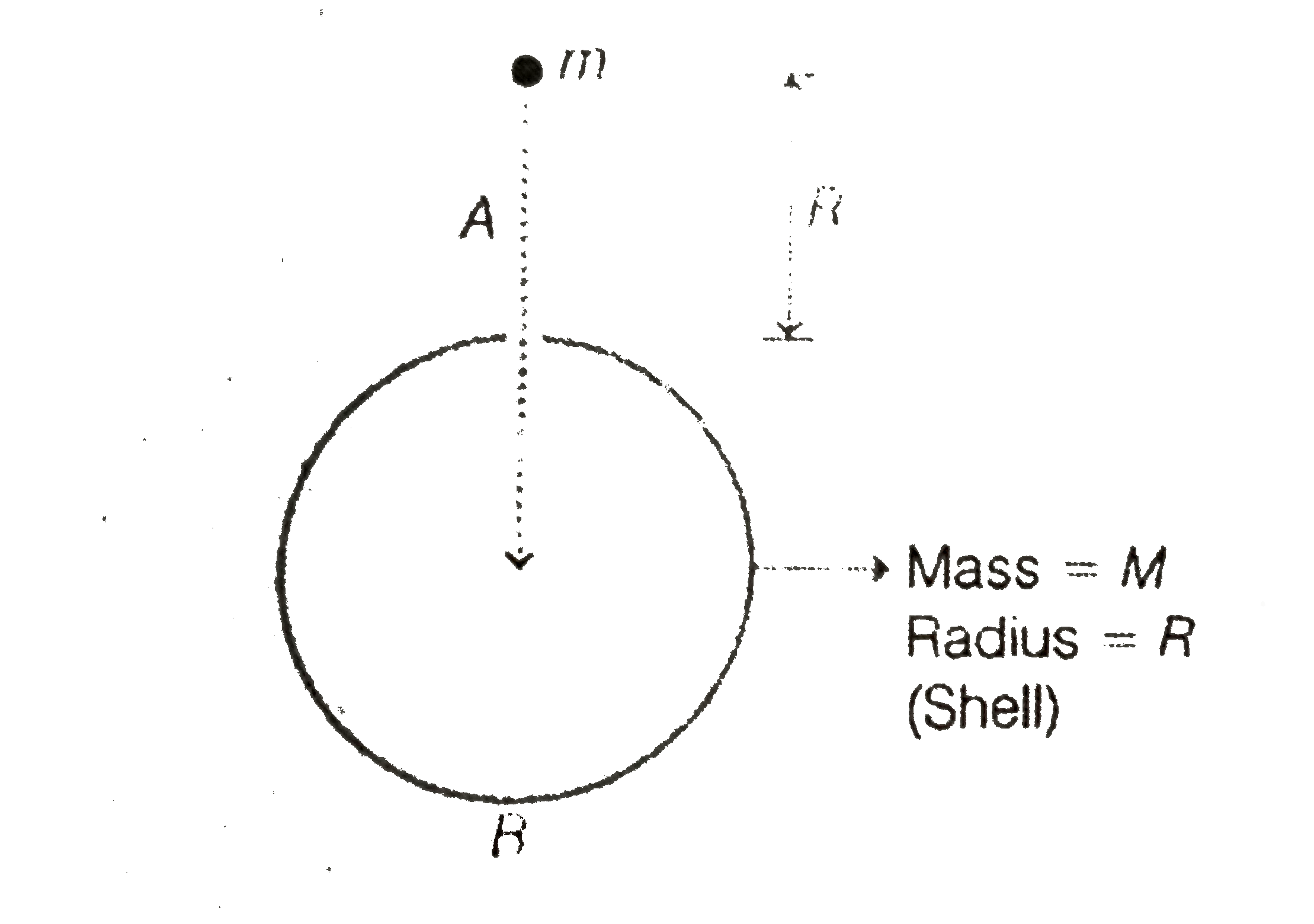Figure shows 4 identical masses of mass m, arranged on a cube as shown.
The force on any particle is

32GM2a2
√32GM2a2
√6GM2a2
none of these
PE=6×GM2√2a
=−3√2GM2a
F=3×GM22a2×√2√3=√32GM2a2
Similar Questions
Figure shows 4 identical masses of mass m, arranged on a cube as shown.
The potential energy of the system is

View SolutionFigure shows two shells of masses m1 and m2. The shells are concentric. At which point, a particle of mass m shall experience zero force?

View SolutionFigure shows two shells of masses m1 and m2. The shells are concentric. At which point, a particle of mass m shall experience zero force?

View SolutionFour identical particles each of mass m are arranged at the corners of a square of sie a. If mass of one of th particle is doubled, the shift in the centre of mass of the system is
View SolutionThe figure shows the position time graph of a particle of mass 40 kg. What is the force acting on the particle of 0<t<4 s

View SolutionFigure shows a hemispherical shell of mass M and radius R and a concentric shell of mass m and radius 3R/4.

View SolutionIn the following figure, the object of mass m is held at rest by a horizontal force as shown. The force exerted by the string on the block is -

View SolutionThree identical cubes each of mass m are place on a smooth horizontal surface.A constant force F is applied on A as shown in the figure.The force on B applied by C is
View SolutionThe figure shows a spherical shell of mass M. The point A is not at the centre but away from the centre of the shell. If a particle of mass m is placed at A, then

View SolutionA particle of mass m is moved from A to B as show in figure. Then potential energy of the the particle

View Solution